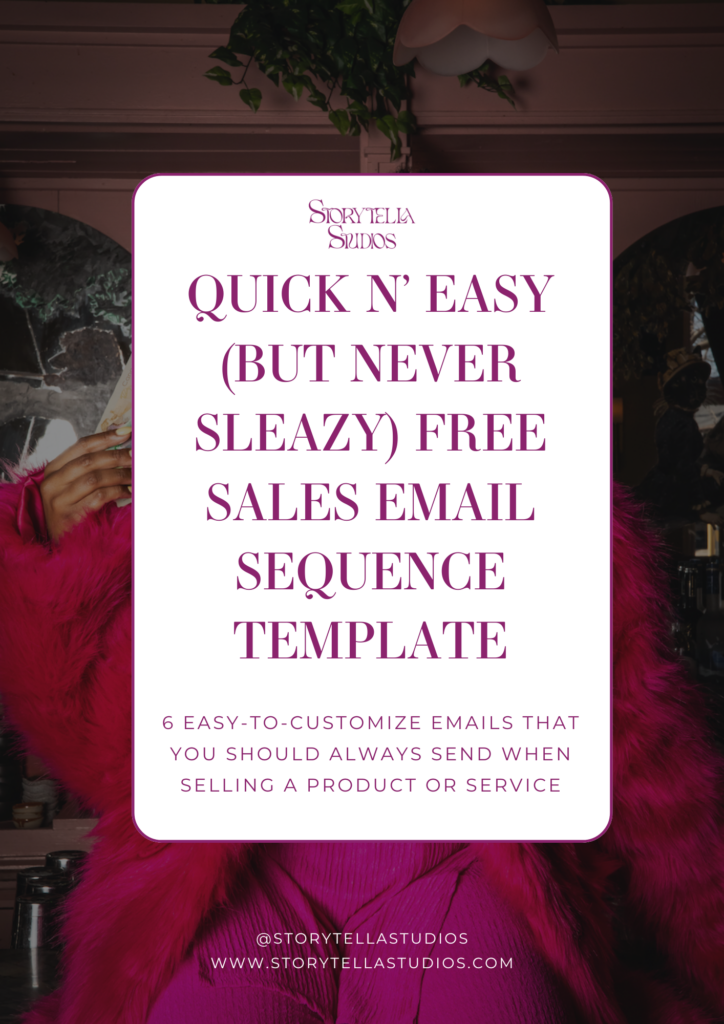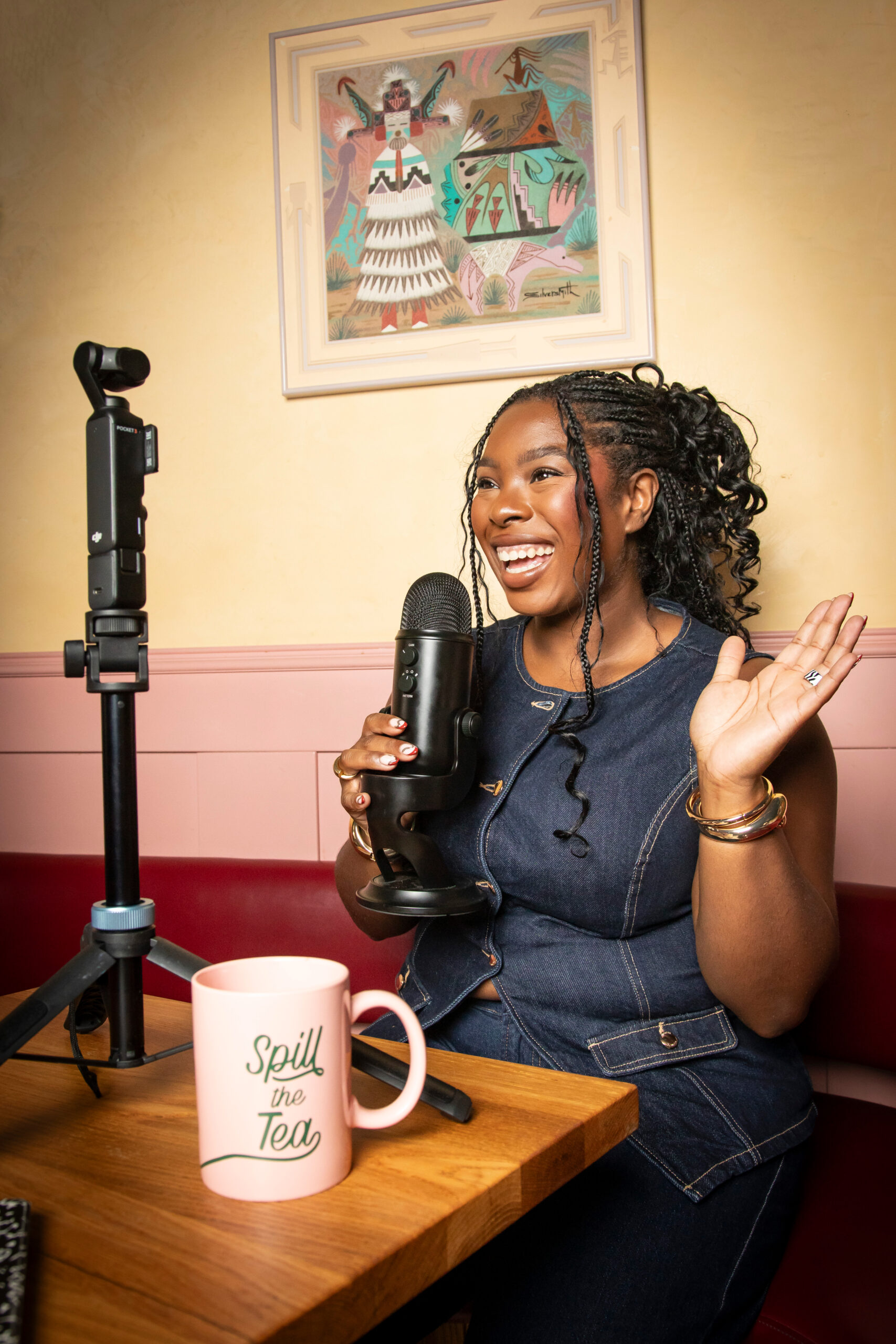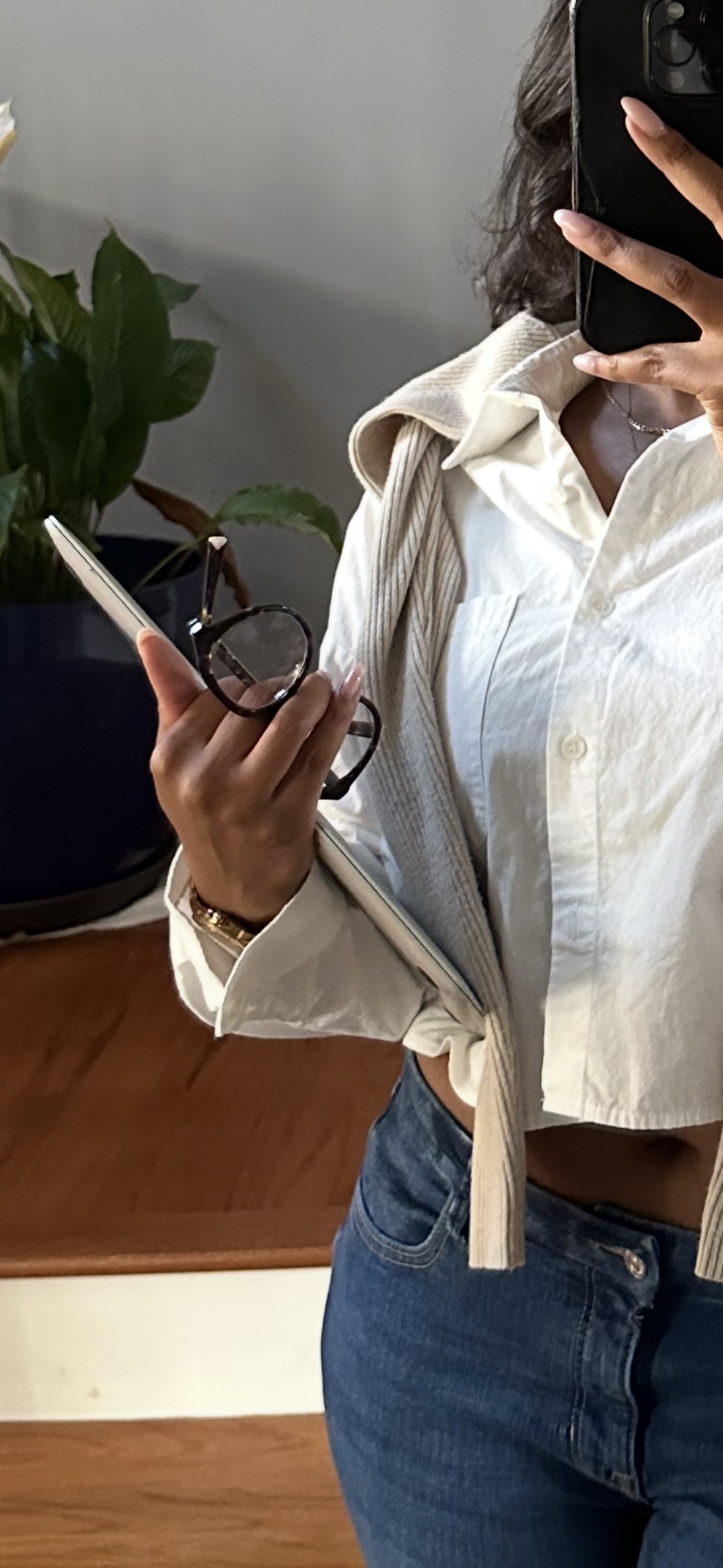HEY FRIEND!
I'm jemilla!
In the past 4 years, I’ve cut my teeth strategizing & writing award-worthy, revenue-increasing, results-snatching copy. And what really lights my fire is writing for woman-owned and BIPOC-led brands. I’m talkin’ the first day after a braiding appointment type of excited! Energizing them to go big with their bold ideas so that when launch time happens, the world thinks “OMG FINALLY, I’ve been waiting for something like this.” And giving them the tools to diversify the market.
about me
services
12 Sales Psychology Techniques to Use In Your Marketing
October 23, 2024
I get it, writing content that converts feels like trying to solve a Rubik’s cube blindfolded. But here’s the thing: understanding sales psychology isn’t just some fancy marketing jargon. It’s your secret weapon for connecting with your audience and turning those “maybe later” responses into “shut up and take my money!”
What is Sales Psychology & Why It Matters
Sales psychology is all about understanding what makes your customers tick, what triggers their buying decisions, and — most importantly — how to present your offer in a way that feels less “used car salesman” and more “trusted advisor.” When you nail these psychological principles, you’re not just selling — you’re solving problems and building relationships.
How to use Sales Psychology Ethically In Your Marketing
There are regulatory bodies like the FTC in the United States that prohibit companies from writing copy that’s not compliant (a.k.a. anything shady that can’t be proven). So you have to make sure you abide by these regulations.
But also:
- Don’t only share positive testimonials. You’re legally required to share negative ones posted on public places, and admitting to shortcomings makes people trust you more
- Don’t manipulate facts to position your product or service in a positive light. If it’s not good enough to impress people on its own, then product development should be the next step. Marketing a bad product never ends well
- Only use relevant psychological techniques. Don’t use scarcity when your product has ample supply. Don’t create FOMO if your target audience has been known to hate that
- Don’t make up fake reviews. It’s just gross.
In short: be honest, don’t be sceevy, and remember that you’re selling and talking to people. Not numbers on a chart, or arbitrary avatars. Humans.
Now let’s dive into 12 sales psychology techniques that’ll help you level up your marketing game without feeling like you need a psychology degree.
12 Sales Psychology Techniques to Use In Your Marketing
1. SOCIAL PROOF
This is any external validator of your credibility and helps people make decisions when they’re not sure what to do. Think:
- testimonials
- your credentials
- success stories and case studies
- products sold or projects completed
- star rating or best seller

Image Source: Storytella Studios© Website
It’s most powerful when a lot of people like a product — because people are more inclined to follow the lead of a large group — and when that large group of people is similar to them or similar to someone they want to be (this is called peer-suasion).
The data doesn’t lie when it comes to social proof:
- 97% of consumers look at reviews before buying a product (Power Reviews)
- Testimonials can increase conversions by 34%. (VWO.com)
- 77% of small businesses utilize social media to reach their clients and claim it’s an integral part of their success (Forbes
- 51.2% of people research brands online before making a purchase (Datareportal.com)
If what you’re selling doesn’t have enough social proof, you can use future social proof by talking about trends — which people will expect to only continue progressing positively.
2. STORYTELLING
I might be biased with this one, but this is a great technique to use because humans are suckers for a good story. In fact, our brains are wired for stories, and even release “the trust hormone” when we hear them.
But more than that, stories are 22x more memorable than facts alone (Stanford University Research), and brand stories increase the perceived value of a product by 20% (Psychology Today).
Using effective storytelling techniques throughout your marketing funnel will create a deeper connection with your audience, be more compelling and relevant, and can lead to more conversions!
Like the Rebundle brand story, which is all about revolutionizing protective hairstyles for Black women. They’re not just selling hair, they’re selling comfort and sustainability with plant-based, compostable braiding hair. That’s the kind of brand story that has Black women everywhere saying “Finally!”

Or the Patagonia brand story, which is all about their deep love of nature and intense commitment to doing good with their business. It’s why the company’s owners transferred Patagonia’s ownership to a trust and non-profit organization to combat climate change and protect undeveloped land worldwide.
3. ESTABLISH YOUR AUTHORITY
This makes people believe you’re the go-to person on a topic of discussion, and they’ll trust you more. The infamous Milgram study shows that people will agree to whatever an authority figure says because society tells us we should, and because they’re “experts”.
Even to symbols of authority, like titles (MD), clothing (a doctor’s white coat), and status symbols (a Tesla).
It’s why ads from companies like Sensodyn work so well — they get an actual dentist to deem the brand as an ideal choice for dental health (although they also could’ve hired an actor, but let’s give them the benefit of the doubt).

IMAGE SOURCE: Reddit
If you’re a credible authority — a trustworthy expert — people will like you even more. And believe it or not, admitting to your shortcomings or failures, and then sharing how you fixed the problem, will also get people to believe in you more.
You can reaffirm your authority by:
- Sharing your credentials and qualifications
- Using social proof, like telling people where you’ve been featured (press)
- Sharing personal experiences and opinions
- Avoid using clichés, vague awards, and claims; i.e., “World’s best doughnuts!”
4. RECIPROCITY
One of the oldest and most reliable techniques, the rule of reciprocity says that if I give you something, you’ll feel obligated to return the favour. So I can ask for something in return rather than wait for a voluntary act from you.
You can do this by:
- Offering a free or low-budget resource that’s a “lead magnet”. In return, you get their email address and get to send them your newsletter emails (p.s. speaking of, my new sales email template bundle freebie is available for download now 😉)

You can also:
- Offer a free gift or discount for first-time buyers. They get to save, and you get the sale
- Promoting a high-priced offer they’ll likely deny, and then a lower-priced offer that they’ll feel obligated to say yes to. Because 1) it seems like you’re taking a hit for making less money and 2) they feel like you’re trying to do right by them by offering a budget alternative
5. FEAR OF MISSING OUT (FOMO)
People don’t want to feel like they’re losing out on something valuable by not taking action. So using this technique to show the benefits of taking a desired action can help increase conversions!
You can do this by:
- Focusing on the benefits after they’ve taken action
- Using social proof to show how many other people are benefitting from taking action
- Remind them how worthwhile the investment is
- Use imagery to drive that fear home — positive imagery for taking action, and negative imagery for not taking action

Example: Email to register for my free live market research masterclass
6. LOSS AVERSION
People feel the squeeze more when they lose something than when they feel the joy of gaining something.
This technique is similar to FOMO, except this is more about fearing losing something we already have while FOMO is the fear of losing out on something we don’t have yet.
It’s why people are more scared that buying your product or service will be a waste of their money than they are excited that it’ll be a great investment.
So lean into loss aversion like this:
- Offer money-back guarantees
- Have flexible return windows
- Focus on what they’ll gain by choosing your product or service
- Use imagery to drive that loss aversion home — positive imagery for buying your product, and negative imagery for not investing
7. SCARCITY
This is when the demand for a product or service is greater than what’s available. People assign more value to things when they’re less available, and think they’re high quality because “so many people want them”.
Scarcity works best when 1) things just become scarce after they’ve been available for a long time restriction-free, and 2) we have to compete with others to have the scarce thing.
But don’t create fake scarcity. It’s sceevy and it’ll get you in trouble with the FTC.
You can create *authentic* scarcity by:
- Highlighting the limited supply of the product or service
- Using countdown timers
- Creating urgency with limited-time offer messaging
- Having social proof, which works well to make a “scarce” thing seem even more valuable and a must-buy
- Highlight exclusive benefits that heighten its perceived value
- Offer pre-order options to heighten the demand for the product/service

8. PERSONALIZED OFFERS & MESSAGING
This uses several psychological techniques to send your audience at different stages of awareness relevant freebies, low-ticket offers, discounts, promos, and messaging. This will affect how successful your marketing funnel is in the long run, because one size does NOT fit all.
This could look like:
- Unaware Stage: Content marketing revealing the problem they’re experiencing + establishing your authority with stats, facts, and personal stories
- Problem-Aware Stage: Using storytelling to share personal and client stories of the solution you found to the problem (which also establishes your authority), using reciprocity by giving free info in exchange for something (i.e., their email for your newsletter)
- Solution-Aware Stage: Offering free trials, samples, and content that shows your product in action with different avatars from your target audience
- Product-Aware Stage: Social proof-heavy content that tells a story of similar people having success with your product, FOMO, scarcity, and retargeting to get them to make a permanent switch to your product
- Most-Aware Stage: Using ALL the techniques: loss aversion, urgency, social proof, FOMO, etc.
9. ATTENTIONAL BIAS
The idea with this technique is that we pay more attention to emotionally stimulating factors and downplay other factors. The more intense and touching something is, the more attention we pay it.
You can tug at heartstrings by:
- Doing qualitative research to understand your target audience’s pains, needs, desires, and fears so you can tell a story in your copy
- Use design psychology in your fonts, colours, and imagery
10. BOLD STATEMENTS
According to the Harvard Business Review, brands that show courage in their marketing strategies grow 69% more than the industry average.
Any bold statement that challenges popular belief or shares your unique opinion or approach will not only get people’s attention and trigger conversations, but it can also establish your credible authority, disrupt and defy norms, and boost engagement.

IMAGE SOURCE: Tonic Site Shop Instagram
11. SOCIAL LISTENING
This involves crawling the internet for social media posts, comments on competitor pages, and product reviews for words and phrases your target audience uses (also called voice of customer), what they think about a brand or their products, and any values and beliefs they share with like-minded people.
You can do this manually, but it’s better to use a tool like Semrush or Hootsuite.
This helps you write copy in your target audience’s words, appeal to them more, and make them feel like you really get them.
It’s like saying “Get exceptional copy” vs. “I couldn’t have said it better myself” — which is a direct quote from one of my client testimonials.

12. QUICK RESPONSES
Jumping on the social listening bandwagon and quickly responding to community comments, sentiments, and trends will help you keep your target audience’s attention for longer. After all, with streaming putting out entire seasons of TV shows in one day, we’re jonesing for quick gratification.
So when someone asks for you to add a new feature to your product, respond with the quickness and add that to-do to your product development list.
When an influencer is known for testing similar products for their inclusivity, jump on the bandwagon and make yourself part of the conversation by getting them to test your product!

IMAGE SOURCE: Haus Labs Instagram
How to Put These Sales Psychology Techniques Into Action
Now that you’ve got these psychological triggers in your marketing toolbox, it’s time to put them to work. Remember: the key to using sales psychology effectively is authenticity. Don’t just throw these techniques at the wall hoping something sticks — strategically weave them into your marketing in a way that feels natural and aligned with your brand voice.
Want to see these sales psychology principles in action? Grab my free Quick n’ Easy (But Never Sleazy) Sales Email Sequence Template. It’s packed with 6 customizable emails that use these exact techniques to connect with your audience and drive conversions — no matter where they are in their buyer’s journey.






